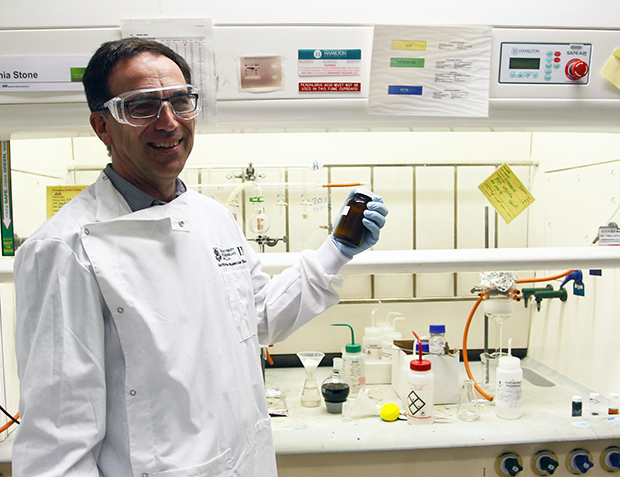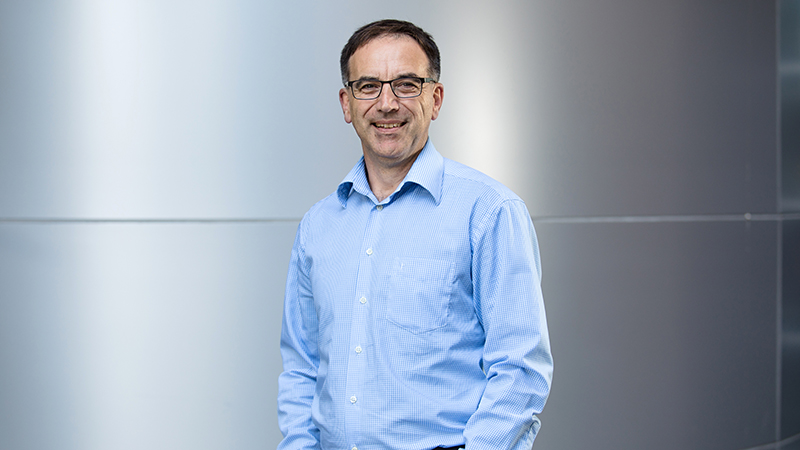Imagine a tiny microbe entering your body, rapidly multiplying and creating a deadly infection resistant to treatment with every single known antibiotic.
For every life-saving antibiotic introduced, bacteria have developed varying levels of resistance, replicating and adapting faster than human cells.
Enter antibiotic hunter Associate Professor Mark Blaskovich, who describes antimicrobial resistance as “the world’s slow-moving pandemic”.
Some bacteria are resistant to every antibiotic
The co-founder of the Community for Open Antimicrobial Drug Discovery (CO-ADD) said global cooperation and compounds containing metals could hold the key to the discovery of the next generation of antibiotics to tackle superbugs
“Resistance to antibiotics is nothing new, however we’ve been taking these medical marvels for granted, using them too much and when they’re not needed,” Dr Blaskovich said.
“As a result, there are now bacteria that are resistant to every single antibiotic on Earth.
“For economic reasons, most major pharmaceutical companies have exited from antibiotic discovery and development, so all the research is in the hands of academic groups and small biotech companies.”

Dr Blaskovich’s main focus is discovering and developing new antibiotics and non-antibiotic approaches to treat drug-resistant bacterial and fungal infections.
An internationally-recognised IMB success story, CO-ADD is a not-for-profit initiative started in 2015. It crowd-sources molecules from academic research groups around the world in order to screen them for antimicrobial activity.
To date, over 300,000 diverse compounds from more than 350 academic groups in 47 countries have been received.
“There are literally hundreds of millions of compounds that have been synthesised but never tested for antimicrobial activity, leaving a plethora of potential antibiotic ‘superheros’ – out there, undiscovered,” Dr Blaskovich said.
Shining a light on superbugs
He said IMB researchers had identified that compounds in the CO-ADD collection containing metals such as silver, manganese, zinc, ruthenium and iridium had a much greater chance of killing bacteria or fungi than more traditional compounds without a metal component.
Importantly, many of these metal compounds were selective at killing the microorganisms, but not human cells.
“CO-ADD is a fantastic opportunity to ‘shine the light’ on the untested reservoir of novel chemical compounds to find solutions in the world’s race to defeat superbugs,” Dr Blaskovich said.
“As a result of enthusiastic support, CO-ADD has helped identify more than 1,500 potential new antibiotics, with a range of chemical diversity, that could help stop superbugs. The work on metal-containing compounds has opened up a whole new area of research to focus on.”
The structures and screening results for many of these compounds is available in an open-access library, allowing scientists to predict the chemical properties that make compounds active against bacteria.
“We are providing tools to the international scientific community – by collaborating, we can better advance antimicrobial research,” Dr Blaskovich said.
“We hope to come up with solutions that will actually save lives through combining the power of academic research and industry development to combat the global problem of antimicrobial resistance.”

Researcher profile
From a very young age, Associate Professor Mark Blaskovich knew he wanted to be an inventor.
Ironically, for the medicinal chemist who has 25 years’ experience in industry and academia and is an inventor on 11 patent families, chemistry was one of his worst subjects at school. But its practical, hands-on nature appealed to the budding inventor, and he pursued it through a 'Co-op' undergraduate degree at university, where he alternated university semesters with industrial placements at companies such as Atomic Energy of Canada.
“This work at a company that made radiopharmaceuticals piqued my interest in medicinal compounds, so for my PhD I wanted to look at the potential for therapeutic development and that triggered my interest in antimicrobial resistance.
“Antibiotics have probably saved more lives than any other medicine, and we are facing the potential of returning to a pre-antibiotic era,” he says of his continued work in this area as Director of the Centre for Superbug Solutions.



